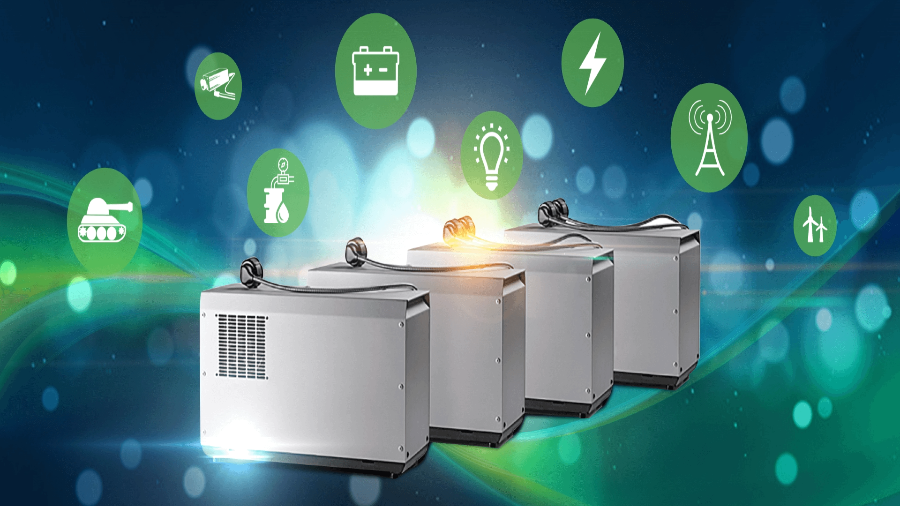Direct Methanol Fuel Cell
The direct methanol fuel cell (DMFC) has long been regarded as a promising fuel cell system due to its ability to generate electric power through the direct conversion of methanol fuel at the anode. This characteristic makes it particularly attractive for applications like transportation, where the use of hydrogen fuel cells often involves complex and bulky reformer systems to convert methanol or other hydrocarbon fuels into hydrogen. However, the widespread adoption of DMFC technology has been hindered by its comparatively lower performance when compared to hydrogen/air fuel cell systems. The primary challenge lies in the anode performance, which demands highly efficient catalysts for methanol oxidation. Among the candidate materials investigated, only platinum-based catalysts have demonstrated the necessary activity and stability for DMFCs.
Recent advancements in proton exchange membrane electrolyte materials have expanded the operational temperature range of DMFCs beyond what was achievable with traditional liquid electrolytes. This breakthrough has led to significant improvements in DMFC performance over the past five years. As a result, the DMFC is approaching a stage where it could potentially become a commercially viable alternative to hydrogen/air systems.
Fuel cells have garnered attention as an alternative to traditional internal combustion engine (ICE) technology due to their numerous advantages, including minimal or zero emissions, enhanced efficiency, and greater reliability. In contrast, batteries, another alternative technology, offer the prospect of genuinely emission-free local transportation. However, existing battery technologies are beset by environmental and engineering limitations, as well as restrictions on the distances they can cover before requiring recharging. Consequently, batteries are primarily seen as a short-term solution, while fuel cell systems are considered a more promising long-term alternative.
A fuel cell operates as an electrochemical engine, converting the free energy change of a chemical reaction directly into electrical energy. For instance, this process can involve the catalyzed electrochemical reaction between hydrogen and oxygen to produce water. This bears some similarity to the combustion process in a conventional heat engine, but fuel cells can operate at significantly lower temperatures, resulting in higher efficiency and reduced pollutant emissions. Various types of fuel cells are currently in development, each with its own set of advantages and limitations.
Current Fuel Cell Technologies
While fuel cells hold great promise in theory, there are several significant challenges that must be addressed before they can become a cost-effective and practical alternative to internal combustion engines (ICEs). One critical consideration is the size of the system and the ability to generate sufficient power within the available space to meet the specific demands of a vehicle. Additionally, the system must have the capability to start quickly and respond promptly to changes in power requirements.
Fuel cell systems based on molten carbonate and solid oxide electrolytes, which operate at high temperatures ranging from 700 to 1000°C, do not meet these requirements. They require extended periods and consume substantial power to reach their operating temperatures.
Proton exchange membrane fuel cell (PEMFC) technology has made significant strides in recent years and has been successfully demonstrated in vehicles. These cells utilize platinum-based catalysts to facilitate electrode reactions and employ a solid acidic proton-conducting polymer electrolyte, often made from perfluorinated sulfuric acid-type materials. However, current PEMFC-powered vehicles primarily rely on pure hydrogen as their fuel source. While this may be acceptable for larger fleet vehicles like transit buses that are based at depots, it poses challenges for smaller privately owned cars. These challenges include difficulties related to fuel distribution, handling, and storage, as well as constraints on vehicle space and weight.
As a result, methanol has gained attention as a viable fuel option. Methanol offers two distinct approaches for use in fuel cells. The favored approach involves an on-board reformer system that converts methanol into a hydrogen-rich gas for consumption by the fuel cell. However, this fuel feed is often diluted with carbon dioxide and potentially nitrogen and may contain traces of carbon monoxide, which can act as a catalyst poison. While carbon monoxide can be removed from the fuel feed using processes like water gas shift and preferential oxidation reactors, such removal can reduce the overall system efficiency and increase system weight, volume, start-up time, and responsiveness to changes in power demand.
Principles of the DMFC
In a direct methanol fuel cell (DMFC), methanol and water undergo an electrochemical reaction at the anode, where methanol is oxidized. This process results in the production of carbon dioxide, protons, and electrons. To facilitate the rejection of carbon dioxide, which forms insoluble carbonates in alkaline electrolytes, the DMFC employs an acidic electrolyte.
The protons generated at the anode then migrate through the polymer electrolyte to the cathode, where they react with oxygen, typically sourced from the air, to produce water. The electrons, which carry the free energy change of the chemical reaction, travel through the external circuit, where they can be harnessed to perform useful work, such as powering an electric motor. This overall process entails the reaction of methanol and oxygen to yield water and carbon dioxide.
In practical DMFC systems, these reactions are facilitated by incorporating platinum-based electrocatalyst materials into the electrodes. In theory, methanol should spontaneously undergo oxidation when the anode potential exceeds 0.046 V relative to the reversible hydrogen electrode (RHE). Similarly, oxygen should spontaneously undergo reduction when the cathode potential drops below 1.23 V. However, real-world conditions, common to all fuel cell types, introduce poor electrode kinetics, resulting in deviations from these ideal thermodynamic values. These deviations lead to a practical reduction in the extremely high theoretical efficiency achievable by the cell.
Source
- https://www.sfc.com/en/technology/direct-methanol/
- https://americanhistory.si.edu/fuelcells/basics.htm#:~:text=Phosphoric%20Acid%20fuel%20cells %20(PAFC,MW%20units%20have%20been%20tested.
- https://www.energy.gov/eere/vehicles/articles/internal-combustion-engine-basics
- https://siqens.de/en/methanol-fuel-cell/#:~:text=2%20CO2-,Design%20and %20principle,charged%20hydrogen%20atoms%20(protons).

